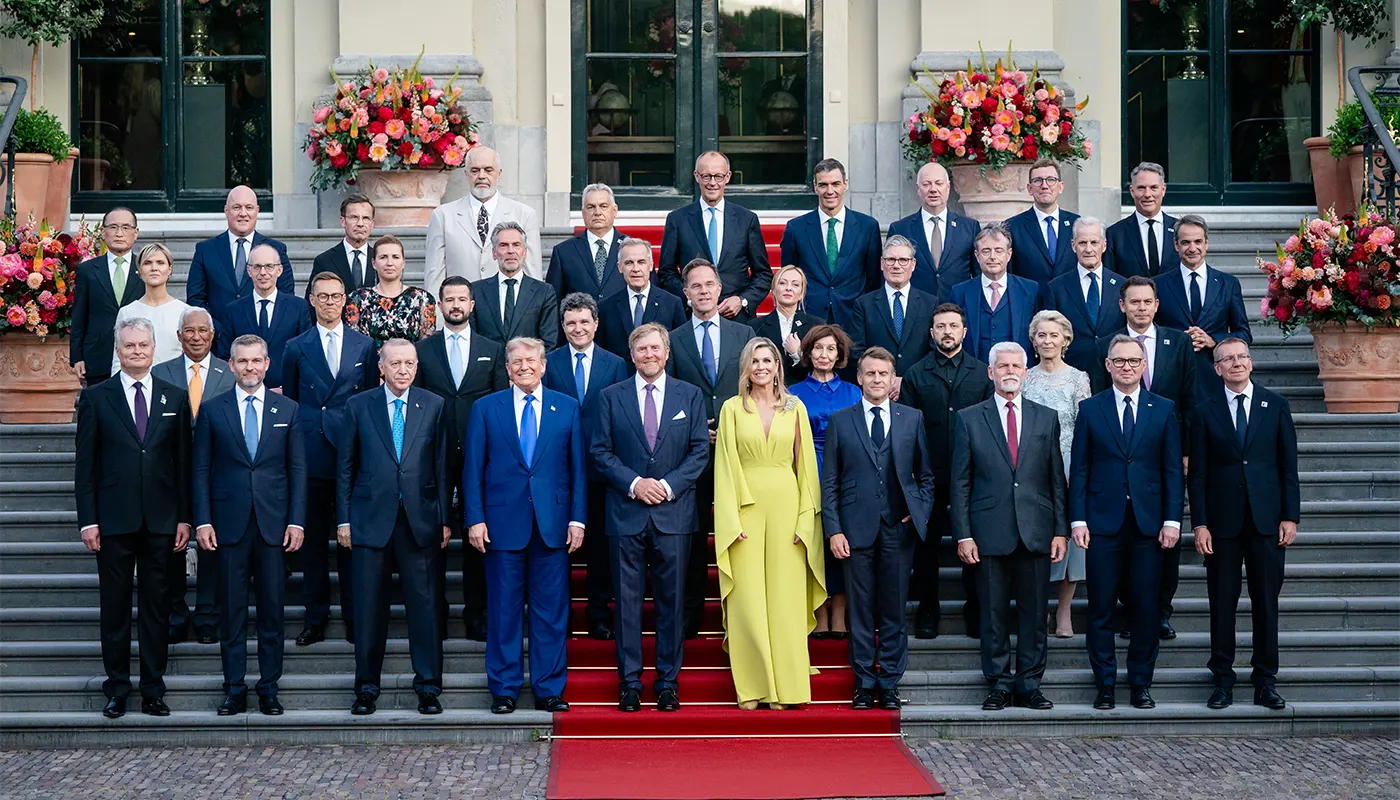The Hague, Netherlands: Leaders from all 32 NATO member countries are gathering in The Hague, Netherlands, for the 2025 NATO Summit on June 24–25, alongside invited leaders from key partner nations.
This summit, chaired by newly appointed NATO Secretary-General Mark Rutte, takes place amid global security challenges—from Russia’s war in Ukraine to instability in the Middle East following U.S.–Iran–Israel flare‑ups.
Attendance Highlights
This year marks U.S. President Donald Trump’s first NATO summit in his second term. Attendees include:
Major NATO state leaders:
- Dutch PM Dick Schoof (as host)
- US President Donald Trump
- UK PM Keir Starmer
- French President Emmanuel Macron
- German Chancellor Friedrich Merz
- Italian PM Giorgia Meloni
- Spanish PM Pedro Sánchez
- Turkish President Recep Tayyip Erdoğan
- Hungarian PM Viktor Orbán
- Prime Minister Kyriakos Mitsotakis of Greece.
Other key attendees: Canadian Prime Minister Mark Carney and European Commission President Ursula von der Leyen or European Council President António Costa
Ukraine: President Volodymyr Zelenskyy will attend the official dinner and bilateral meetings, although his role in the main sessions is limited to avoid provoking Trump.
Other NATO members’ Head of State: Albania, Belgium, Bulgaria, Croatia, the Czech Republic, Greece, Denmark, Finland, Slovenia, Iceland, Latvia, Luxembourg, Montenegro, North Macedonia, Lithuania, Norway, Poland, Portugal, Estonia, Romania, Slovakia, and Sweden.
Partner nations: Japanese PM Shigeru Ishiba and New Zealand’s Christopher Luxon are confirmed. Invitations extended to Australia and South Korea, though Australia’s leader is absent.
Key Agenda Items
- Defence Spending Boost
Trump has pressed allies to raise military spending to 5% of GDP, a significant jump from the current 2% target. A final summit communiqué is expected to enshrine this new goal—potentially by 2035—with most European leaders on board, though Spain and Slovakia are resisting. - Russia–Ukraine War Support
Sustained backing for Ukraine remains critical. Leaders will reassess commitments following last year’s pledge of €50 billion per year. Zelenskyy’s involvement underscores NATO’s ongoing focus, even amid internal tensions. - Middle East and Israel-Iran Conflict
Recent U.S.–Iran strikes, Iran’s missile attacks, and Trump’s ceasefire initiative in the Iran–Israel conflict will be discussed. Germany has confirmed that the situation will feature in summit deliberations. - Cybersecurity & Hybrid Threats
With rising cyberattacks and sabotage—highlighted by disruptions in Dutch rail—NATO seeks to integrate critical infrastructure and cyberdefence into its security model, especially under the new spending framework - Article 5 Collective Defence Clarification
Trump cast doubt on mutual defence commitments, prompting intense behind-the-scenes discussions to affirm the U.S. guarantee under Article 5—even as allies address his phrasing.
Summit Format & Context
To minimize friction, the summit is deliberately brief and high-profile, featuring a single dinner and a compact final communiqué. It is the most expensive in NATO history at €183 million, with massive security deployments underlining the summit’s geopolitical weight.





